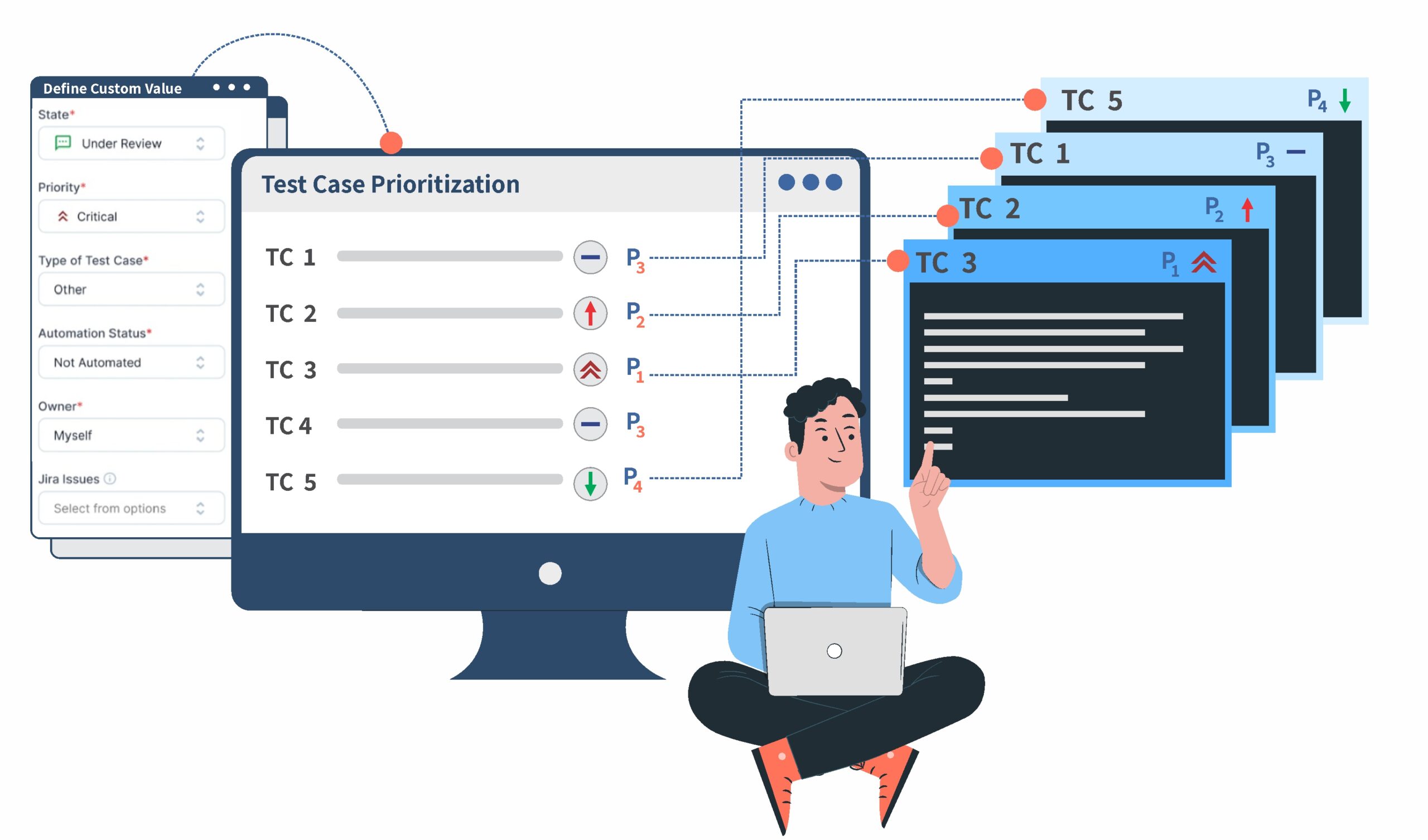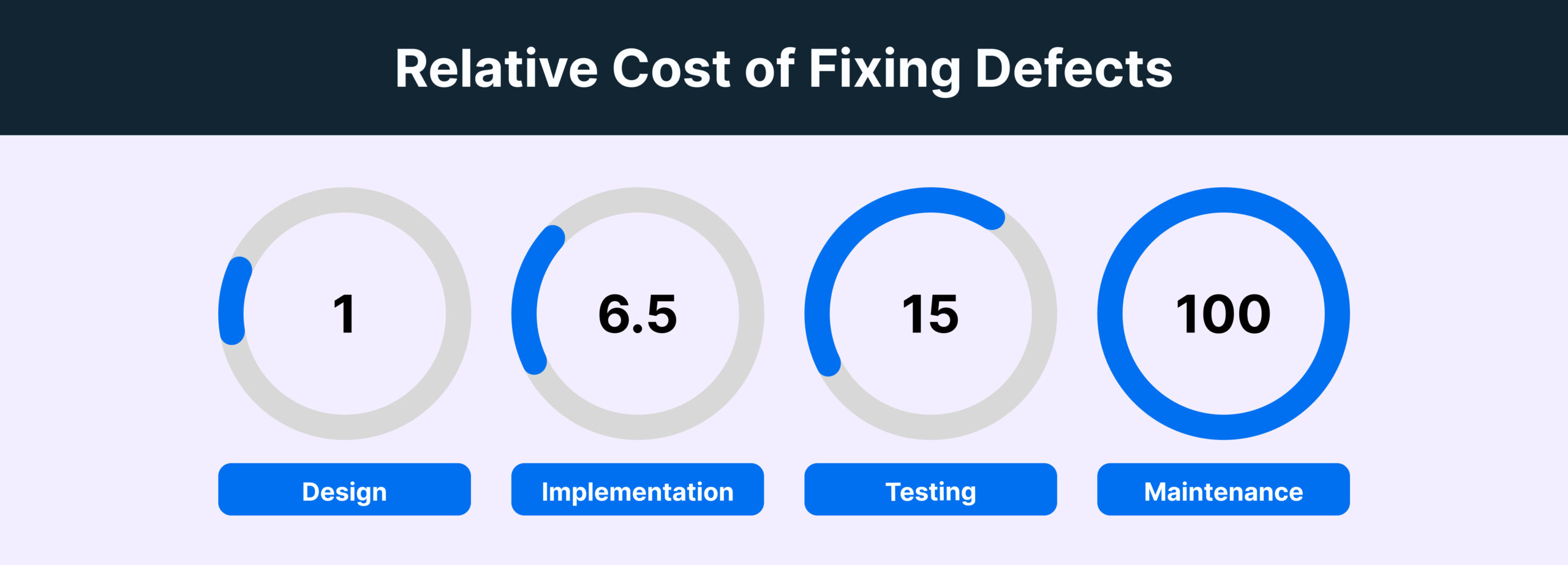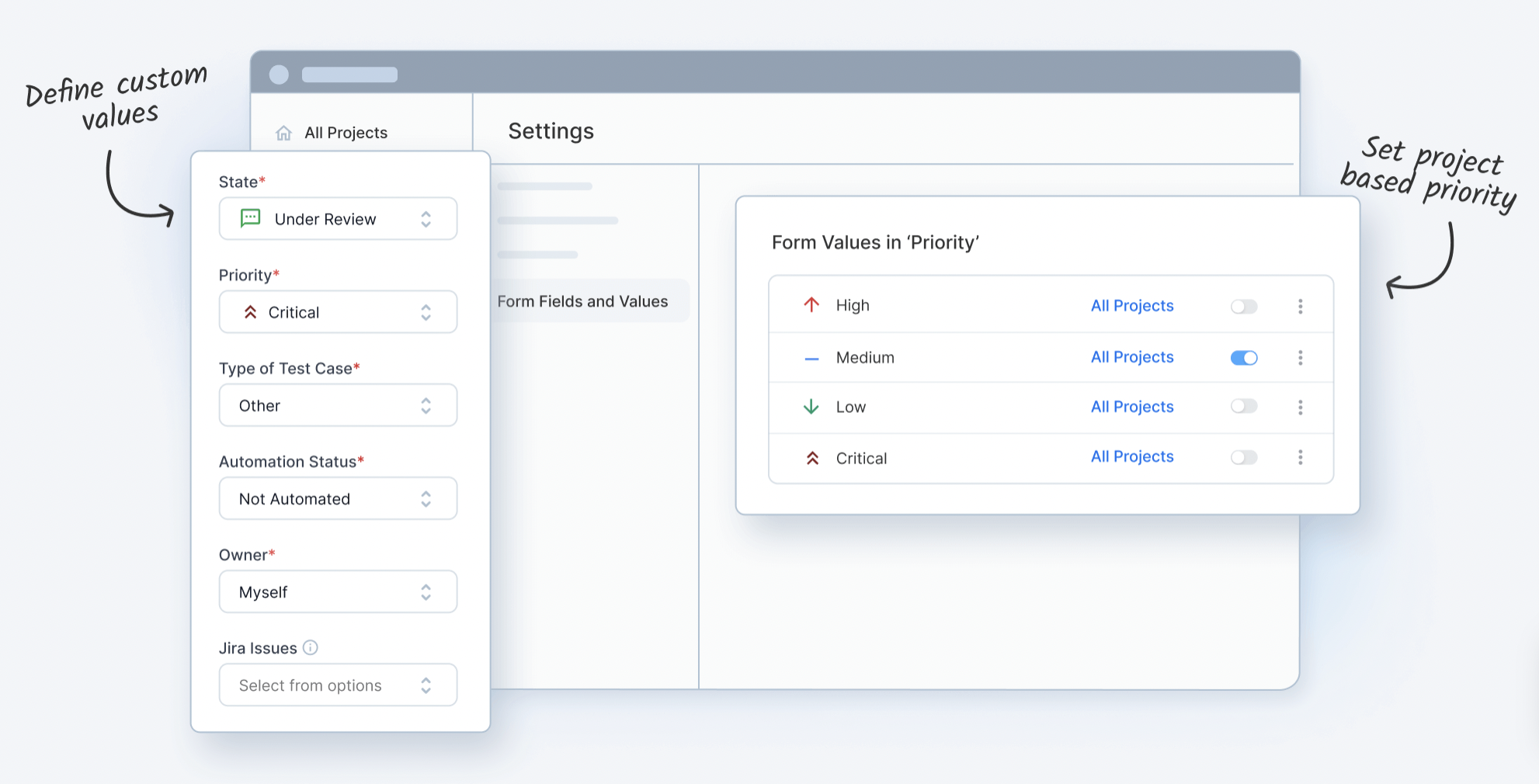What is Test Case Prioritization
What is Test Case Prioritization?
Test Case Prioritization is the process of assigning priority levels to individual test cases based on their significance, criticality, and potential impact on the software application being tested.
It is a testing approach where test cases are arranged and executed in a particular sequence, determined by their significance or likelihood of uncovering defects. The objective is to streamline testing activities by giving early attention to high-priority test cases, ensuring a thorough examination of critical elements in the software.
Test Case Prioritization is a tactical approach within test management that boosts effectiveness, minimizes risk, and guarantees that testing activities are directed toward the most crucial facets of the software. This ultimately results in a more efficient and top-quality testing process.
It is the process of prioritizing test cases in a test suite on the basis of different factors, which could be anything ranging from code coverage and functionality to risk/critical modules, features, etc.
It gives an approach to execute highly significant test cases first according to some measures and then produce the desired outcome, such as revealing the faults earlier and providing the testers with feedback.
Why is Test Case Priority important?
Did you know software bugs cause economic damage of $316 billion per year globally?
Test Case Priority is crucial for software testing from an ROI perspective. It helps with:
- Cost-effectiveness
- Faster release
- Improving User Churn Rate
- Efficient Resource Utilization
- Better Visibility and Control
Cost-effectiveness
Test case prioritization makes test execution effective and increases the chances of finding and fixing bugs early on in the testing stage. It allows you to run the critical test cases before others so that defects can be identified.
This helps save costs related to fixing defects by up to 85%. The faster the defect is caught, the lesser cost is incurred in fixing the defect.
Moreover, you can avoid spending resources on lesser critical test cases saving on costs.
Faster Release
By prioritizing high-impact cases, teams can identify and address critical defects early in the testing process, reducing the risk of severe issues later in the development cycle. This helps save time as critical defects are identified early, enabling developers to address issues promptly.
You can deliver faster releases by simply arranging the order of the test cases during Test Execution and speed up the overall testing process.
Improving User Churn Rate
Did you know out of every 2 apps installed, 1 is uninstalled within the first 30 days due to lack of user experience.
With high churn rates, it is crucial to deliver high-quality software with an effective testing process to retain users. By prioritizing high impact test cases, you can deliver better software quality and a bug-free experience. By running high-business impact test cases, you can ensure user-friendliness and detect any cases early on. This gives more time for defect management and fixing.
By focusing on high-risk areas, teams can effectively mitigate potential impacts of defects on software quality. Prioritizing regression test cases ensures that critical functionalities and previously identified issues are retested first.
Thus help deliver better user experience and reduce churn rate.
Efficient Resource Utilization
Prioritizing test cases allows testing teams to allocate resources effectively, focusing on critical areas and functionalities first. By de-prioritizing low-impact test cases you can save on resources.
Better Visibility and Control
Focusing on high-priority test cases contributes to better overall test coverage. Test Priority leads to enhanced stakeholder confidence. It enables project managers to have better control over the testing activities.
What are different Test Case Priority Levels?
While deciding how to assign priority to your test cases, consider the following levels:
- Priority 1: The test cases MUST be executed, or the consequences may worsen after the product is released. These are critical test cases where the chances of getting a functionality disrupted due to a new feature are most likely possible.
- Priority 2: The test cases COULD be executed with enough time. These are not very critical cases but can be executed as a best practice for a double check before launch.
- Priority 3: The test cases are NOT important to be tested prior to the current release. These can be tested later, shortly after the release of the current software version, as a best practice. However, there is no direct dependency on it.
- Priority 4: The test cases are NEVER important, as their impact is nearly negligible.
Who needs to Prioritize Tests?
Test Priority is used for delivering high-quality software applications by:
- Developers, who perform unit testing and debug code based on test results to deliver error-free code.
- QAs, who test the application using different testing techniques like functional, regression, usability, and cross-browser testing to find bugs and document them in detailed Test Execution Reports.
- Product Managers, who foresee the entire software development lifecycle of the product and ensure optimum performance with faster delivery and high quality.
- Business Analysts, who ensure all the test cases are well aligned with the business requirements specs at every stage, keeping users’ interests in mind.
Learn More about Test Management
Different Techniques to decide Priority of Test Cases
Commonly techniques to assign test case priority are:
- Coverage-based prioritization
- Risk-based prioritization
- Requirements-based prioritization
- History-based prioritization
- Cost-based test prioritization
Coverage-based prioritization
Code-based test prioritization techniques involve organizing and executing test cases based on the source code or recent code changes. The aim is to optimize testing efforts by prioritizing areas of the code that are more likely to contain defects.
This approach focuses on identifying and addressing potential issues early in the testing process, especially after code modifications or updates. Various strategies, such as prioritizing modified code coverage, risk analysis, dependency analysis, and code complexity metrics, are employed to enhance the efficiency of the testing process. The choice of a specific code-based test prioritization technique depends on project requirements and the characteristics of the codebase.
Risk-based prioritization
Risk-based test prioritization is a methodology in software testing that entails arranging test cases according to the perceived risk linked to particular functionalities or sections of the software.
The objective is to optimize the allocation of testing resources by concentrating on high-risk components, thereby enhancing the probability of early detection of critical defects during the testing phase. This strategy acknowledges the variability in the criticality of different software components, emphasizing that certain areas present a higher risk of defects or failures than others.
Requirements-based prioritization
Requirement-based Test Case Prioritization is a testing approach that involves organizing and executing test cases based on the priority of software requirements. In this method, the criticality and significance of each requirement are evaluated, and test cases related to high-priority requirements are given precedence.
This approach contributes to the efficient use of resources, allowing for comprehensive coverage of high-priority requirements and facilitating the early detection of potential defects in vital functionalities.
History-based prioritization
History-based Test Case Prioritization is a testing strategy that involves prioritizing test cases based on historical data and the outcomes of previous testing cycles. In this approach, the performance and effectiveness of test cases in uncovering defects are analyzed over time.
This method allows for an adaptive and data-driven approach to prioritize test cases based on empirical evidence and historical testing outcomes.
Cost-aware based prioritization
Cost-aware Test Case Prioritization is a testing approach that considers the economic factors associated with test execution and defect detection. In this strategy, test cases are prioritized based on their potential cost-effectiveness, aiming to achieve the maximum value with the available resources.
This approach aligns testing priorities with the economic constraints of the project, ensuring that resources are efficiently utilized to address the most critical and cost-sensitive aspects of the software.
Factors to consider when deciding Priority of Test Cases
Some factors that influence how you prioritize test cases are:
- Business impact: Prioritize test cases associated with functionalities critical to the business.
- Critical functionalities: Test cases covering core functionalities should be prioritized as they form the foundation of the software.
- Risk assessment: Prioritize test cases for high-risk functionalities or components, considering factors such as complexity, dependencies, and historical defect data.
- Regulatory compliance: Prioritize test cases for functionalities that must adhere to regulatory standards or compliance requirements.
- Customer impact: Prioritize test cases based on features that have received frequent feedback or that are critical user experience tests.
- Regression testing: Prioritize test cases for regression testing, especially for functionalities that might be affected by recent changes.
- Historical data: Prioritize test cases for these areas to prevent the recurrence of known problems.
How to set and manage priority of Test Cases using BrowserStack Test Management
BrowserStack Test Management is an AI-powered, unified platform designed to accelerate test case creation, execution, and automation with up to 90% faster test authoring and 50% improved coverage.
It offers seamless integrations, real-time visibility through customizable dashboards, and advanced AI agents that streamline testing workflows for both manual and automated tests.
Built for teams of all sizes, it ensures secure data handling while enabling high-quality, efficient software delivery.
Key Features of BrowserStack Test Management:
- AI-Powered Test Case Creation: Automatically generate comprehensive test cases from Product Requirement Documents (PRDs), user stories, or text prompts. AI also suggests enhancements to existing test cases, reducing manual effort significantly.
- Test Deduplication Agent: Detects exact or semantically similar test cases across your repository, providing intelligent recommendations for merging or removal to maintain a clean and efficient test suite.
- Low-Code Automated Test Authoring: Quickly convert manual test cases into low-code automated tests to accelerate automation adoption without requiring deep coding skills.
- Intelligent Test Selection Agent: Uses AI to identify and recommend the most relevant tests for execution, optimizing test runs and focusing on critical test coverage.
- Unified Test Management: Manage all manual and automated test cases in one centralized platform with full traceability from requirements to defects through seamless integrations with Jira, Azure DevOps, and more.
- Powerful Dashboard Analytics: Access customizable dashboards that offer real-time insights, track release status, monitor historical trends, and visualize testing metrics, including automation coverage.
- Shared Steps for Reusability: Mark repetitive test steps as shared within test cases to enhance reusability and save effort when creating or maintaining test cases.
- Quick Import & Custom Field Mapping: Import test cases rapidly from CSV files or existing management tools with automatic field mapping and on-the-fly custom field creation.
- AI-Powered Jira App with Two-Way Binding: Synchronize test cases and runs between BrowserStack Test Management and Jira, allowing management from both platforms with AI-driven assistance.
- Streamlined Manual and Automated Test Runs: Plan and execute test runs across manual and automated tests. Supports dynamic test inclusion and uploading automation results from frameworks like JUnit, BDD-JSON, and Test Observability.
BrowserStack Test Management’s free version provides unlimited test cases, strong integrations, and live reporting for efficient test management
Creating a test project and add test cases
- Log in to Test Management.
- Enter a project name and description, and then click Create Project.
- Click Create a folder.
- Click the kebab icon next to the folder.
- Click Create test cases, and then click Create Test Case.
- Populate all required details, such as State, Owner, Priority, Type of Test Case, and Automation Status.
One of the ways you can mark test cases is by using the Priority and Tags field. You can later filter your test cases on these criteria and add these to your test plan faster.
- Click Create.
- Repeat the process to add all your test cases.
After you are done adding your test cases, you can now filter these on the basis of different criteria and prioritize them.
Filter your test cases
- Select the Test Cases tab in the project dashboard.
- Click Filter at the top right of the screen.
- In the Filter Test Cases dialog box, select the filter criteria such as State, Owner, Priority, Tags, Test Case Type, and Automation Status to narrow your search.
- Click Apply.
Try BrowserStack Test Management
Metrics to measure Effectiveness of a Prioritized Test Suite
To measure the effectiveness of the prioritized test suite, you can use a metric called APFD (Average Percentage of Faults Detected) that can be calculated using the below formula.
APFD = 1 – ( (TF1 + TF2 + ……. + TFm) / nm ) + 1 / 2n
where,
TFi = position of the first Test case in Test suite T that exposes Fault i
m = total number of Faults exposed under T
n = total number of Test cases in T
AFPD values can range from 0 to 100. Higher the APFD value, faster the fault detection rate.
So simply put, APFD indicates how quickly the test suite can identify faults or bugs in software. If the test suite can detect faults quickly, then it is considered to be more effective and reliable.
Best Practices for efficient Test Priority
Some of the key best practices for effective test execution are:
- Understand the critical functionalities that directly impact business goals and revenue.
- Involve stakeholders, including business analysts, product owners, and end-users, in the prioritization process.
- Perform a thorough risk analysis to identify high-risk functionalities.
- Identify and prioritize industry compliance-related test cases.
- Use test management tools to optimize and efficiently handle prioritization.
- Regularly review and update priorities.
- Prioritize regression test cases to avoid breaking changes.
Conclusion
Test Case Priority is pivotal in software testing to ensure faster test execution. The more critical test cases are run on priority to identify defects as early as possible. It makes the testing process efficient.
Using tools like Browserstack Test Management you can assign priority to test cases, and enhance the effectiveness of the testing process saving on time, cost and efforts.
Useful Resources for Test Case
Understanding Test Case:
- What is a Test Suite & Test Case? (with Examples)
- What is Test Case Specification?
- Fundamentals of Writing Good Test Cases
- Understanding what is UI Test Cases (with Examples)
- Test Case Vs Test Script
- Test Plan vs Test Case: Core Differences
- Use Case vs Test Case: Core Differences
- Test Case Review Process
- Captcha Test Case
- Test Case Templates with Example
Tutorials and Best Practices:
- How to Write Test Cases for Login Page
- How to optimize test cases for Continuous Integration
- How to speed up UI Test Cases
- How to run parallel test cases in TestNG
- How to write JUnit test cases
- How to write Test Cases for Gmail
- How to write Test Cases for Mobile Applications
- How Automation of Regression Test Cases can be Cost Effective
- How to Create Test Cases for Automated tests?
- How to create Selenium test cases
- How to write Test Cases in Software Testing? (with Format & Example)
- How to write Test Case in Cypress: (with testing example)
- How to run failed test cases using TestNG in Selenium Webdriver?
- How to take Screenshot of Failed Test Cases in Cucumber
- How to run JUnit 4 Test Cases in JUnit 5
- How to create and manage test cases in Jira and BrowserStack Test Management
- How to make your Selenium test cases run faster
- How to Write Test Cases for Amazon Shopping?
- Test Cases for Search Functionality
- Test Cases for ECommerce Website
- Test Cases for Facebook Login Page
- Test Case Reduction and Techniques to Follow





